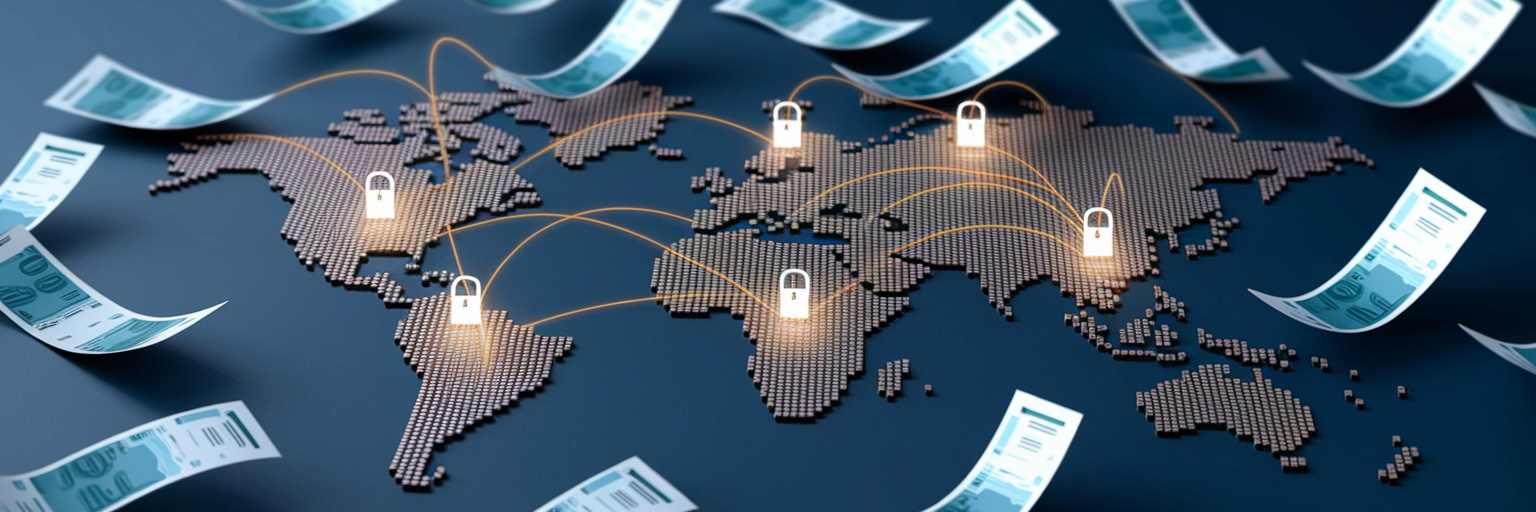Effective Strategies for Secure Multi Currency Expense Tracking

The New Imperative for Global Expense Security
The widespread adoption of remote work and global teams did more than just change our office locations; it fundamentally broke traditional expense management. The familiar spreadsheet, once a reliable tool, has become a source of friction and risk. We have all seen the messy result: a patchwork of currencies, delayed reports, and manual data entry that invites errors.
For modern finance leaders, the challenge is a constant balancing act. On one side, you have the operational drag of managing expenses in dollars, euros, and yen. On the other, you face cyber threats that have grown far more sophisticated than the tools designed to stop them. This isn’t just about convenience anymore. It’s about survival.
The journey from manual expense logs to automated, encrypted platforms represents a critical business evolution. This shift is not a simple upgrade. It is a necessary adaptation for any company operating in a borderless economy. Failing to secure financial data in transit is no longer an option. The stakes are simply too high, involving not just financial loss but also reputational damage and a loss of trust with employees and stakeholders alike.
Leveraging AI-Powered Platforms for Seamless Automation
While security establishes the foundation, artificial intelligence provides the efficiency that transforms expense management from a chore into a strategic asset. The focus here is purely on speed and accuracy, removing the human bottlenecks that slow finance teams down. This is where AI in expense reporting truly shines, streamlining every step of the process.
Real-Time Currency Conversion
Remember the mental gymnastics of converting a hotel bill from British pounds to US dollars while juggling exchange rate fluctuations? AI-powered platforms eliminate this entirely. They function like a built-in currency exchange expert, providing instant conversions at the moment of purchase. This gives employees immediate clarity on their spending and equips finance teams with an accurate, real-time view of the company’s cash flow, no matter where in the world money is being spent.
Automated Data Capture and Categorization
The days of manually typing details from a crumpled receipt are over. Modern systems use optical character recognition (OCR) to scan and extract key information, from the vendor name to the total amount. The system then intelligently categorizes the expense, assigning it to the correct project or department code. This automation drastically reduces the manual input that is a primary source of human error, freeing up teams to focus on analysis rather than data entry.
Predictive Analytics for Financial Oversight
Beyond simple automation, AI offers powerful analytical capabilities. By analyzing historical spending patterns, these platforms can help with more accurate budget forecasting. They can also automatically flag expenses that fall outside of company policy, such as a flight booked in business class when policy dictates economy. This proactive oversight turns multi-currency expense management from a reactive task into a forward-looking strategic function.
Implementing End-to-End Encryption as a Core Security Layer
With efficiency addressed, we turn to the non-negotiable pillar: security. The most effective approach is rooted in end-to-end encryption finance, a method that protects sensitive expense data from the moment it is captured on an employee’s phone to its final destination on a server. Think of it as a digital sealed envelope; the contents are scrambled and can only be read by the authorized recipient, making them useless to anyone who might intercept them along the way.
However, encryption alone is not enough. True security is built in layers, creating a resilient defense against a variety of threats. A comprehensive strategy includes:
- Robust access controls that ensure employees can only see the data relevant to their role.
- Regular, independent vulnerability assessments to proactively identify and patch potential weaknesses.
- Secure multi-factor authentication methods that verify user identity beyond a simple password.
To further enhance integrity, some platforms are incorporating blockchain technology. As a report from Softjourn highlights, blockchain’s immutable ledger creates a tamper-proof audit trail for every transaction. This adds another layer of trust and transparency. Ultimately, a truly secure expense tracking app treats these security measures not as features, but as fundamental requirements for protecting company and employee data.
Navigating the Complexities of Global Compliance
Managing a global team introduces another layer of complexity: a fragmented landscape of international data privacy laws. What is considered compliant for data handling in Canada may violate regulations in the European Union. Adhering to these rules is not just about avoiding fines; it is a core component of corporate governance and maintaining your brand’s reputation.
Regulations like GDPR in Europe or CCPA in California dictate exactly how personal and financial data must be collected, stored, and processed. This includes data residency rules, which may require that a citizen’s data be stored on servers within their own country. Keeping up with these varied and changing requirements demands a proactive approach to global expense compliance.
| Regulation | Geographic Scope | Key Requirement for Expense Data |
|---|---|---|
| GDPR | European Union | Requires explicit consent for data processing and imposes strict rules on cross-border data transfers. |
| CCPA/CPRA | California, USA | Grants consumers the right to know what personal data is collected and the right to have it deleted. |
| PIPEDA | Canada | Governs how private sector organizations collect, use, and disclose personal information in commercial activities. |
| LGPD | Brazil | Modeled after GDPR, it creates a legal framework for the use of personal data in Brazil. |
To manage this complexity, businesses should:
- Select platforms with configurable, region-specific compliance features that can adapt to local laws.
- Schedule regular reviews of data handling policies with legal counsel to stay ahead of regulatory changes.
- Implement a flexible data governance framework that can evolve as new laws are introduced.
Preparing for the Future of Cross-Border Transactions
Looking ahead, the technologies that underpin global finance are themselves evolving. One of the most significant developments on the horizon is the rise of Central Bank Digital Currencies (CBDCs), such as the digital euro. As the European Central Bank has explored, these government-backed digital currencies have the potential to standardize international payments, reducing costs and friction for business transactions.
We are already seeing a preview of this future from fintech innovators. Companies like Wise and Revolut offer multi-currency accounts and debit cards that provide instant, low-cost conversions, demonstrating the demand for more efficient cross-border financial tools. While widespread CBDC adoption is likely still years away and faces significant regulatory discussions, the direction of travel is clear.
The most prudent strategy for businesses today is a dual approach. First, leverage the powerful fintech solutions available now to streamline operations and cut costs. Second, closely monitor the development of CBDCs to prepare for the next wave of financial innovation. A successful strategy for 2025 and beyond will be one that integrates AI-driven automation, uncompromising end-to-end encryption, and diligent compliance. This forward-looking mindset is what will define mastery in multi-currency expense management.


